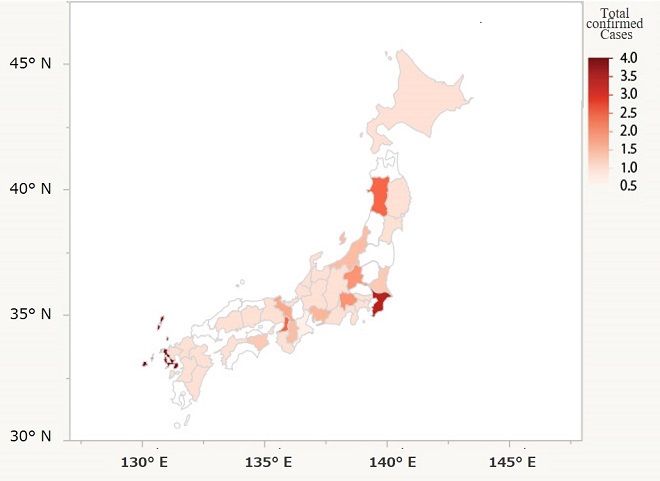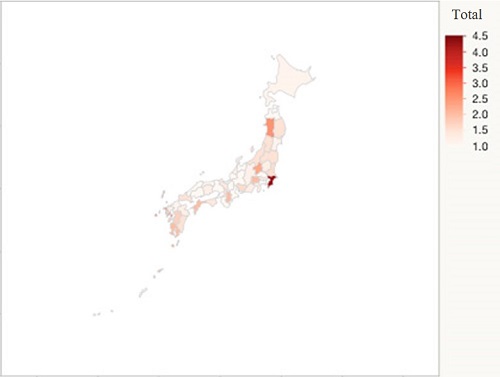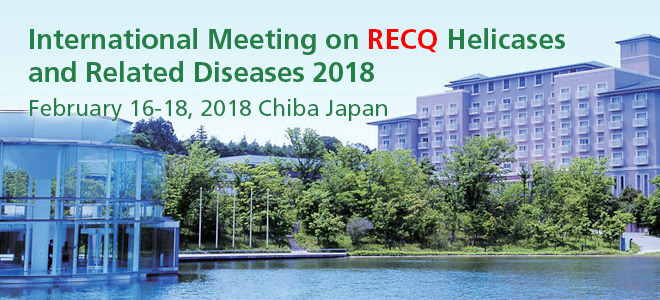Werner syndrome

千葉大学大学院医学研究院
内分泌代謝・血液・老年内科学
千葉大学病院
糖尿病・代謝・内分泌内科 / 血液内科 / 高齢者医療センター

A prospective, single-center study (EMPOWER study) to evaluate the safety and efficacy of nicotinamide riboside in Werner syndrome
There is no definitive treatment for Werner syndrome. Symptomatic treatment is usually employed and focuses on treating intractable ulcers, sarcopenia, arteriosclerotic diseases, etc. However, the effects are limited, and treatments with better efficacy are needed.
In recent years, geriatric research has discovered sirtuins. Sirtuins, also known as longevity genes or anti-aging genes, are said to extend the lifespan when activated. Nicotinamide adenine dinucleotide (NAD) is important for the activation of sirtuins. Decreased NAD levels have been observed in patients with Werner syndrome (Nat Commun. 2019 Nov 21;10(1):5284), thus suggesting that supplementation with NAD's precursor may be effective for treating Werner syndrome.
Chiba University is conducting an EMPOWER study to investigate the safety and efficacy of nicotinamide riboside, a precursor of NAD, which is said to be effective in suppressing the symptoms of aging such as intractable ulcers, sarcopenia, and arteriosclerotic diseases, in patients with Werner syndrome. Recruitment of patients was performed until the end of September 2021.
For more information on the study, please refer to:
https://jrct.niph.go.jp/en-latest-detail/jRCTs031190141
Werner syndrome is a rare genetic disease initially reported in 1904 by German physician Otto Werner. This condition is classified a disease of "premature aging" (progeria) because aging seems to progress rapidly after puberty. Gray hair, hair loss, and cataracts in both eyes appear when the patient is in their 20s, while the muscles and skin of the hands and feet become thin and tough, making them look older than their actual age. Diabetes and dyslipidemia (abnormalities in cholesterol and triglyceride levels) are also common, and, in the past, many patients died of malignant tumors or myocardial infarction in their 40s. Life expectancy has been extended, thanks to the advances in treatment; nowadays, some Werner syndrome patients reached the age of 50 years and 60 years. On the contrary, some patients develop deep wounds on the toes or elbow that do not heal (intractable skin ulcers) leading to amputation of the foot due to repeated infection; even today, many patients experience extreme difficulties in their day-to-day life.
According to some studies, there are an estimated up to 2,000 people with Werner syndrome in Japan, with a prevalence of 1 in approximately 50,000 to 60,000 people.
Regionally, the disease is prevalent in Japan, with 60% of the patients reported worldwide being Japanese. In the past, the patients reported were from areas with many consanguineous marriages (cousin marriages and second-cousin marriages); in recent years, the number of patients whose disease onset is not related to consanguinity is relatively increasing. Lifestyle habits such as daily diet and exercise are thought to be unrelated to the onset of this disease.
It is thought to be caused by an abnormality in the WRN gene. WRN (also known as deoxyribonucleic acid (DNA) helicase) plays a role in repairing DNA *1, which is the blueprint of our body, when it is damaged. However, the reason why abnormalities in WRN accelerate aging remains unknown.
Humans have a pair (two) of genes inherited from each parent. Werner syndrome only occurs when both WRN genes are defective. In most cases, each of the patient’s parents only has one causative gene and does not develop the disease. About 1 in 4 of the patient’s siblings will develop the disease, but the probability that the patient’s children or their children will develop the disease like their parent or grandparent is less than 1 in 200 to 400. In conclusion, the possibility is extremely low.
After the age of 20 years, symptoms such as gray hair and hair loss, cataracts (often in both eyes), and a high-pitched hoarse voice occur. In addition, muscle atrophy in the arms and legs occurs, the skin becomes hard and thin, and deep wounds that are difficult to heal develop (intractable skin ulcers). They are often short in stature, and X-rays often reveal calcifications in the Achilles tendons and subcutaneous tissues (accumulation of calcium components). In addition, many people develop diabetes and dyslipidemia, and menopause, when the level of sex hormones declines, is more likely to occur at an early age.
Werner syndrome has no cure, and treatment or preventive measures for signs of “visual aging” including gray hair, hair loss, and skin changes are not available. Foot wounds are difficult to heal and can seriously interfere with day-to-day life. It is therefore important to take preventive measures such as avoiding the formation of blisters on the feet. If it occurs, symptomatic treatments such as cleaning, disinfection, protection, and moisture retention are required. However, surgery to transplant skin from other areas of the body may be effective in some cases. On the contrary, early detection and treatment are important for certain diseases such as malignant tumors, cataracts, diabetes, dyslipidemia, etc.; surgery and medication treatment are effective in patients with Werner syndrome as they are in the general patients.
In the past, many patients with Werner syndrome died in their mid-40s from arteriosclerotic diseases such as malignant tumors (cancer) or myocardial infarction. However, recent studies show that the average life expectancy has increased by more than 10 years, and the number of patients in their 60s is relatively increasing. On the contrary, many patients develop intractable wounds (intractable skin ulcers) on the heel, feet, elbow, etc., and are forced to undergo foot amputation due to continuous pain and repeated infection. This interferes with their day-to-day life and poses a major problem.
First, it is important to protect and observe areas that are prone to ulcer formation such as the Achilles tendon, heels, feet, and elbows to prevent the formation of deep wounds that are difficult to heal (intractable skin ulcers). Skin that has become thin and tough is easily wounded due to the pressure exerted by the underlying bones. Such wounds are prone to develop into deep ulcers. Special shoes (orthoses) may be used to protect the areas that are tender to pressure or are about to form wounds. Assessment should be performed to detect the presence of malignant tumors during regular hospital visits, and metabolic abnormalities such as diabetes and dyslipidemia should be treated to prevent the rapid progression of arteriosclerosis.
*1 DNA:
A substance found in the cells that make up the human body. It serves as a blueprint to produce proteins necessary for sustaining life.
*Werner Syndrome Handbook
A guide for patients with Werner syndrome, their family, and medical professionals. 1st edition
Confirmed: Presence of all cardinal signs, OR, presence of biallelic WRN gene mutations in addition to at least three cardinal signs.
Suspected: Presence of both I-1 (progeroid changes of hair) and I-2 (cataract), AND, at least two more signs or symptoms from I or II.
Takemoto M, Mori S, Kuzuya M, Yoshimoto S, Shimamoto A, Igarashi M, Tanaka Y, Miki T, Yokote K. Diagnostic criteria for Werner syndrome based on Japanese nationwide epidemiological survey. Geriatr Gerontol Int. 2013 Apr;13(2):475-81.
2020 research group member list(*in Japanese)
The patient provided consent to the publishing of their unaltered images and voice on this website.
Unauthorized use of images and audio is strictly prohibited.
This nationwide epidemiological survey aimed to understand the circumstances surrounding Werner syndrome in Japan based on the Japan Agency for Medical Research and Development (Practical Research Project for Intractable Diseases) “Creation of Evidence through Nationwide Survey of Werner Syndrome with Progeria and Construction of a Case Registration System.”
Werner syndrome is a rare genetic progeria and is highly prevalent in Japan, with two-thirds of the patients reported worldwide being Japanese. A nationwide survey was conducted in 2009. As a result, 200 Werner syndrome patients were identified, and the disease was designated as an intractable disease. Based on the results of this survey, the diagnostic criteria for Werner syndrome were revised for the first time in 25 years, and the treatment guidelines, which did not exist up until then, were created. Currently, there are an estimated up to 2,000 people with Werner syndrome in Japan. However, the circumstances surrounding the patients and the disease are not fully understood, and it has no curative treatment. We therefore aim to compile useful evidence collected in Japan to improve the patients’ prognosis and quality of life (QOL).
We would like to thank half of the participating facilities who responded to this survey. We would appreciate it if the doctors who are in charge of the facilities where the questionnaire was sent and have not responded yet would take the time to fill out the enclosed survey form with the number of patients admitted in the department in the last 10 years who meet the criteria or suspected patients and to send the forms back it to us by faxing it to 043-226-2095. If none of the patients meet the criteria, it is still necessary to provide the estimated number of patients diagnosed with Werner syndrome nationwide; hence, please mark “none” on the survey form and return it.
We also accept inquiries from doctors who have examined new patients and requests for genetic testing.
You can also download the questionnaire and the attached materials here(*in Japanese).
We may send individual survey forms at a later date if there are patients who meet the criteria or are suspected to meet the criteria. In such cases, we would appreciate your cooperation.
We promote the establishment of a case registration system for Werner syndrome through this survey; we strive to enhance the quality of medical care for this disease to improve the prognosis of patients by revising the treatment guidelines. We appreciate your cooperation.
Office of Werner Syndrome National Epidemiological Survey: 1-8-1 Inohana, Chuo-ku, Chiba 260-8670
Endocrinology, Hematology, and Gerontology, Graduate School of Medicine and School of Medicine, Chiba University
Practical Research Project for Intractable Diseases, Japan Agency for Medical Research and Development
“Creation of Evidence Through Nationwide Surveys of Werner Syndrome with Progeria and Construction of a Case Registration System”
Research group
Research group leader: Koutaro Yokote
Research group leader: Koutaro Yokote Person in charge for the National epidemiological survey of Werner syndrome: Masaya Koshizaka
(Endocrinology, Hematology, and Gerontology, Graduate School of Medicine and School of Medicine, Chiba University)
Phone: 043-226-2092, Fax: 043-226-2095
The 2017 nationwide epidemiological survey (primary survey) was conducted to understand the circumstances surrounding Werner syndrome in Japan based on the Japan Agency for Medical Research and Development (Practical Research Project for Intractable Diseases) "Creation of Evidence through Nationwide Survey of Werner Syndrome with Progeria and Construction of a Case Registration System.” The compiled results will be made publicly available.
The survey was conducted in the form of a questionnaire survey conducted from February 2017 and included 7,889 clinical departments (internal medicine, ophthalmology, dermatology, orthopedics, plastic surgery, etc.) in hospitals with 200 or more beds nationwide. We received a total of 3,154 responses (response rate: 40%). We would like to take this opportunity to once again thank the doctors in all facilities for their cooperation.
We were able to identify 200 Werner syndrome patients from the previous nationwide survey conducted in 2010. In addition to this, we were able to identify 116 patients with confirmed cases of Werner syndrome (57 men and 59 women) in this survey. Furthermore, 51 patients (29 men and 22 women) were suspected of having Werner syndrome. Patients suspected of having Werner syndrome are currently undergoing genetic testing in our department. Additionally, we identified 153 patients (80 men, 71 women, and 2 of unknown gender) with a confirmed diagnosis who have visited one of the medical institutions in Japan in the last 10 years (patients with confirmed cases with previous hospital visits). A total of 320 patients in Japan comprising those with confirmed cases, those with suspected cases, and those with previous hospital visits have been identified.
| Werner syndrome confirmed male cases | Werner syndrome confirmed female cases | Werner syndrome suspected male cases | Werner syndrome suspected female patients | Werner syndrome confirmed male cases With previous hospital visits | Werner syndrome confirmed female cases With previous hospital visits | Total | |
|---|---|---|---|---|---|---|---|
| 小計 | 57 | 59 | 29 | 22 | 80 | 71 | |
| その他 | Gender/number unknown 2 | ||||||
| 合計 | 116 | 51 | 153 | 320 | |||
No regional difference was observed in terms of the distribution of patients nationwide*. This finding suggests that there is no clear regional difference in the incidence of the disease, and patients well distributed nationwide.

Confirmed cases

Confirmed cases + suspected cases + confirmed cases with previous hospital visits
We plan to conduct a secondary survey in the future in the facilities that reported confirmed cases in the primary survey. In the secondary survey, based on the data obtained, we will investigate the disease, recruit patients for studies including clinical trials**, and provide information to registered patients and attending physicians with the use of the Werner syndrome case registration (registry) system.
The primary survey has been completed, but we are still accepting inquiries from doctors who have examined new patients and requests for genetic testing as needed.
* The number of cases reported in Chiba is relatively high compared with that in other prefectures. This is probably because a large number of patients are referred to Chiba University Hospital.
** Dr. Nakagami of Osaka University is taking the lead in recruiting patients who wish to participate in the clinical trial for “the treatment of intractable ulcers using novel peptides,” which will be conducted in September this year. Chiba University is also conducting a study using induced pluripotent stem (iPS) cells.
Office of Werner Syndrome National Epidemiological Survey: 1-8-1 Inohana, Chuo-ku, Chiba 260-8670
Endocrinology, Hematology, and Gerontology, Graduate School of Medicine and School of Medicine, Chiba University
Practical Research Project for Intractable Diseases, Japan Agency for Medical Research and Development
“Creation of Evidence Through Nationwide Surveys of Werner Syndrome with Progeria and Construction of a Case Registration System”
Research group
Research group leader: Kotaro Yokote
Person in charge for the National epidemiological survey of Werner syndrome: Masaya Koshizaka
(Endocrinology, Hematology, and Gerontology, Graduate School of Medicine and School of Medicine, Chiba University)
Phone: 043-226-2092, Fax: 043-226-2095

International Meeting on RECQ Helicases and Related Diseases 2018
Date: February 16th (Friday) – 18th (Sunday), 2018
Venue: Kazusa Academia Park
URL:http://www.jtbw-mice.com/recq2018/
This meeting has been held in the United States to discuss RECQ helicase-related progeria syndromes such as Werner syndrome, Bloom syndrome, and Rothmund-Thomson syndrome. It was initially held in Asia in 2018. In addition to xeroderma pigmentosum, Cockayne syndrome, and Hutchinson-Gilford progeria syndrome, a wide range of aging-related conditions associated with these diseases was discussed including, cellular aging, mitochondrial disorders, and iPS cell biology. The meeting was attended by 135 participants (29 from outside Japan) and was a great success. A total of 27 speakers, including 12 from overseas, provided advanced lectures followed by lively discussions. Twenty-one patients, including 5 from overseas, were present, and their participation led to the active exchange of information between researchers and patients. It was a unique symposium with participants from both Japan and overseas commenting that the interaction with patients delineated the issues and made them feel more motivated.